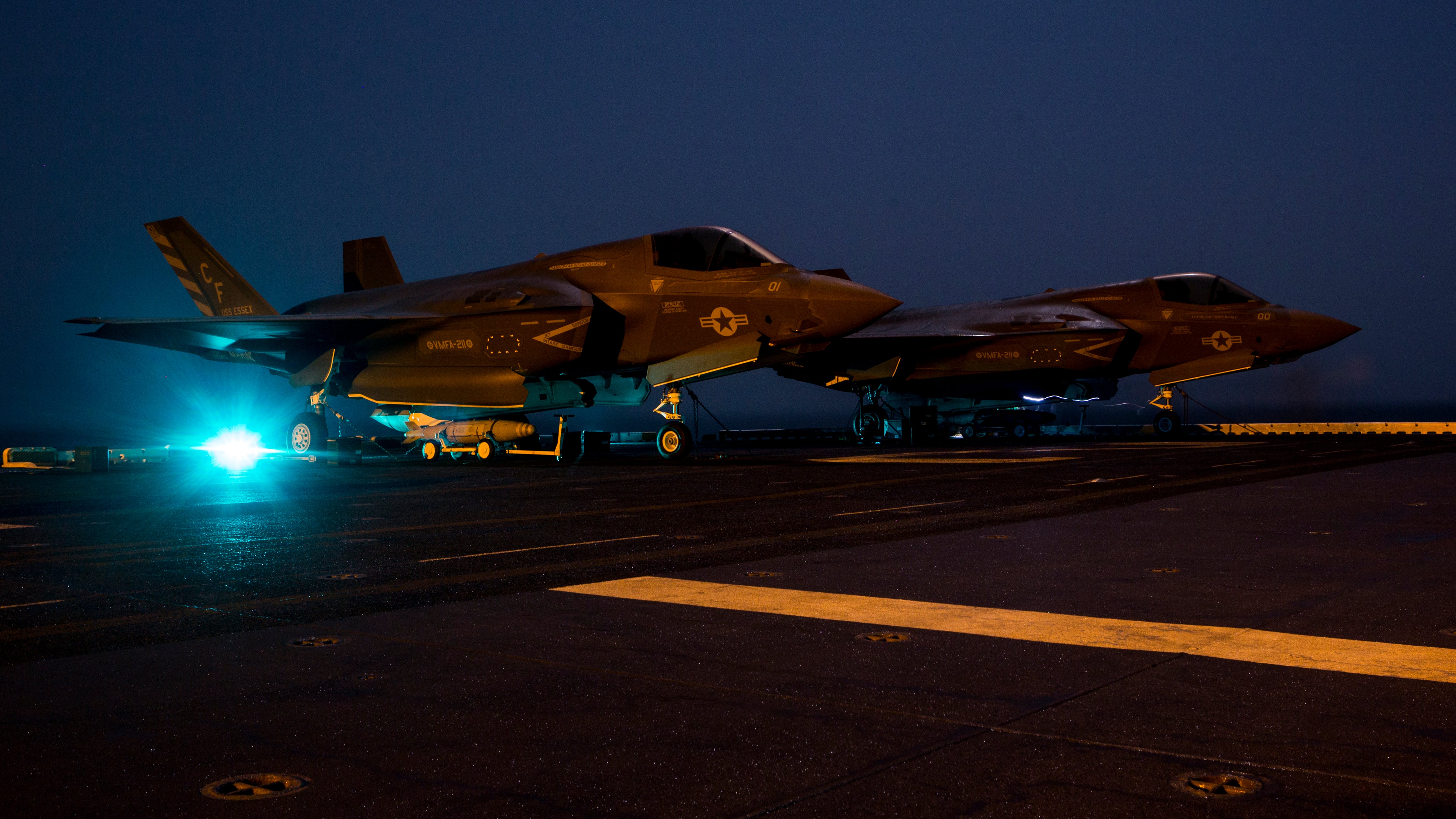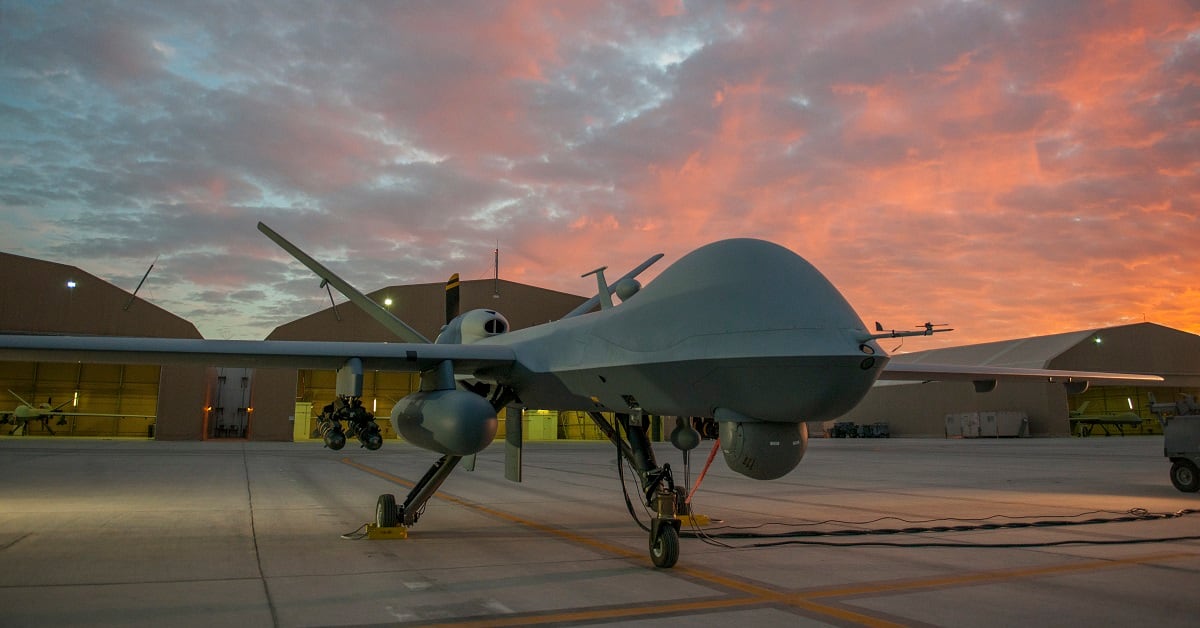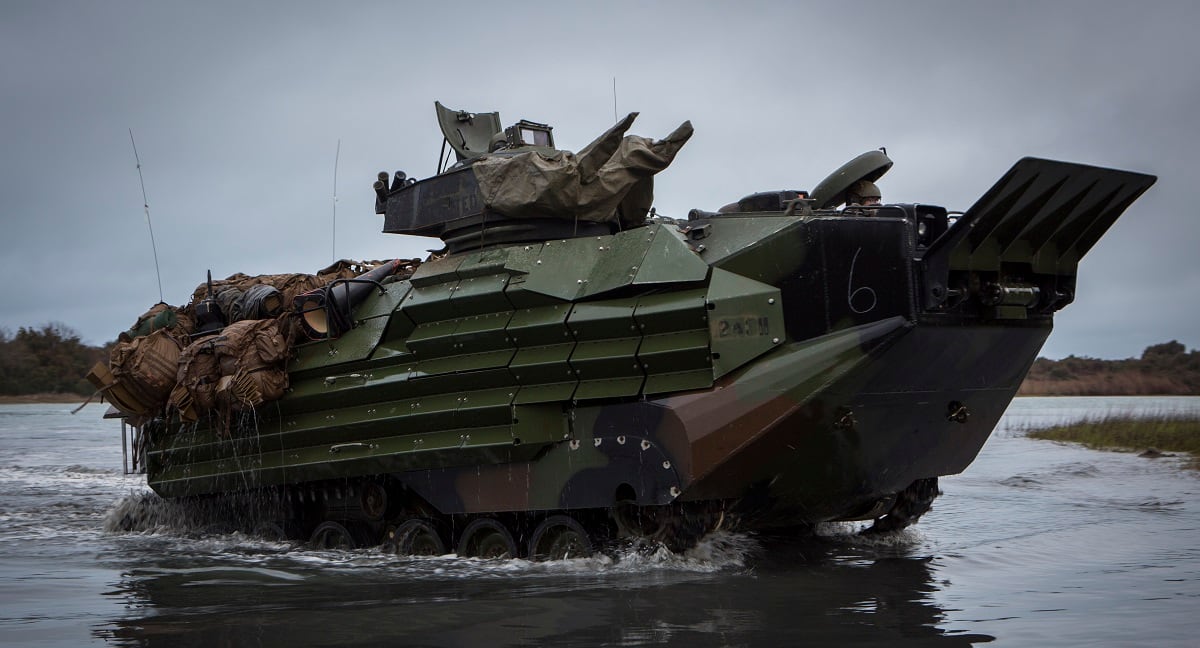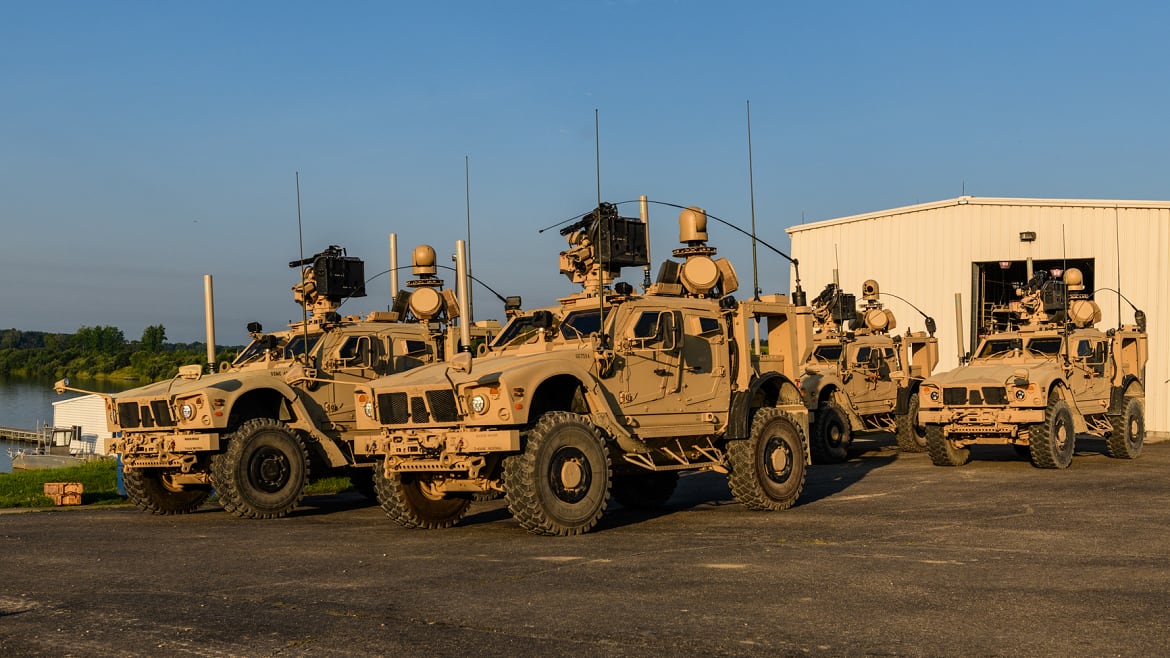The Corps plans to only grow by 100 Marines to 186,200 in fiscal year 2020, but that investment focuses on Marines with high-end skills and weapons and tech for the modern battlefield.
The fiscal 2020 Navy budget request, totaling a whopping $205.6 billion, is a 4.6 percent increase from fiscal 2019. The budget reflects the Corps’ continued goals to overhaul its force in the face of rising near-peer and peer competitors like Russia and China.
And a first for the Corps, the Marines plan to procure its largest drone yet, the MQ-9 Reaper, which is believed to be a gap filler and trainer for the Corps as it drives to develop the futuristic MUX drone. The Corps plans to procure three Reapers in fiscal 2020, according to Navy budget documents.
Other aviation fiscal 2020 procurements include six more CH-53Ks, 10 more F-35Bs and an air adversarial trainer, Switzerland’s F-5E/F — a supersonic fighter that will help train Navy and Marine aviators.

The CH-53K is the Corps’ newest heavy-lift workhorse helicopters that will prove vital helping move Marines and equipment across the vast expanse of the Pacific Ocean. In total, the Navy-Marine team is seeking to add 148 aircraft to the tune of $18.6 billion — a slight decrease from $20.3 billion in fiscal 2019.
Moreover, Reapers in the Corps’ arsenal would be the first time the Corps has ever fielded or operated a large group-5 drone.
The Corps’ does not currently have institutional knowledge on operating and maintaining group-5 drones, but has slowly been learning the ropes in Afghanistan.
A small Marine adviser group in Helmand province, Afghanistan, known as Task Force Southwest has a Reaper organic to the unit, though the drone is contractor operated through General Atomics Aeronautical Systems Inc.
The Reaper is helping provide tactical and intelligence support to Marines downrange but its also helping the Corps build knowledge of operating the Reaper. The Corps says the goal is that Marines will eventually operate and maintain the system on their own.
But the Afghanistan based MQ-9 is believed to be a gap filler for the Corps’ futuristic MUX, which isn’t expected to be fielded for years. The MUX is the Corps’ expeditionary sea-based and amphibious ship launched drone that will aid the Corps in operating independent of carrier groups with an array of sensors and early airborne warning capabilities.
RELATED

There was no mention of the status of the MUX in the fiscal 2020 budget request, and Marine Corps Times has reached out to the Marine Corps on the status of that platform.
The budget request also continues the Corps’ drive to modernize its ground forces with new vehicles, communications capabilities and air defense systems.
The Corps is seeking to procure 1,398 Joint Light Tactical Vehicles, or JLTVs, in fiscal year 2020, 244 less than the prior year.
The Corps also plans buy 56 of the first full rate production of the new eight-wheeled amphibious combat vehicle. The ACV is seen as complimentary and a partial replacement to the aging legacy tracked assault amphibious vehicle.
Those plans include the procurement of six test articles for the ACV version 1.2, which will include three different vehicle variants, a command and control, recovery, and up gunned 30 mm cannon equipped ACV.
RELATED

In total, the Corps is dropping $318 million on the ACV in fiscal 2020, which is nearly double the $167 million in fiscal 2019.
The Corps also wants to procure the ground combat and utility task vehicle versions of the networking-on-the-move system, or NOTM. The Corp’s NOTM system is designed to ease data and communications while being highly mobile on the battlefield.
Investments in the Corps’ air defense systems are also highlighted in the 2020 budget. The Corps has rapidly been expanding its air defense capabilities as the force faces down rival adversaries with sophisticated air, drone, and cruise missile capabilities.
It’s an issue the Corps hasn’t had to seriously ponder over the nearly two decades of combat operations in Iraq and Afghanistan, where air threats have been generally low.
In fiscal year 2020 the Corps wants to procure eight Ground/Air Task Oriented Radar, or G/ATOR. The G/ATOR is a mobile radar system capable of tracking an array of air breathing targets and incoming projectiles like mortars, artillery and cruise missiles.
The Corps is also continuing investments in it Ground Based Air Dense System, or GBAD. The GBAD system is expected to include kinetic and non-kinetic or electronic attack capabilities to blast drones or air threats out of the sky.

While the Corps is only growing modestly, it’s putting money in to weapon systems and capabilities for the high-end fight with more tech adept forces.
The Corps only plans to grow by 100 Marines in fiscal 2020, but those Marines are slated for high-end skill sets like intelligence, special operations and cyber.
The Corps further added in the Navy budget request that it was able to increase infantry squad leaders by 330 using “internal structural realignments.” The Corps says this was done to address the need for more experienced and capable leaders within the infantry.
In spring 2018, the Commandant of the Marine Corps decided to cut the rifle squad from 13 Marines to 12. The smaller sized squad afforded the Corps additional manpower in other critical needs and skills. However, the Corps is preparing to test a 15-man squad for an upcoming Marine Expeditionary Unit deployment.
The cut to the rifle squad came with boosts in tech to include automatic weapons, new anti-tank systems, drones, tablets, and better night vision.
The fiscal 2020 Navy budget request also includes investments in infantry weapons systems like the FGM-148 Javelin. The Corps wants to spend $20 million on the anti-tank Javelin system in FY 2020, that’s an increase of $17 million compared to FY 2019.
The Corps is trying to phase out the aging anti-tank guided missile TOW systems with the Javelin. As part of the top Marine’s overhaul of the infantry, the Corps is plusing up its weapons companies with four additional Javelin systems, bringing them to a total of 12.
Shawn Snow is the senior reporter for Marine Corps Times and a Marine Corps veteran.




